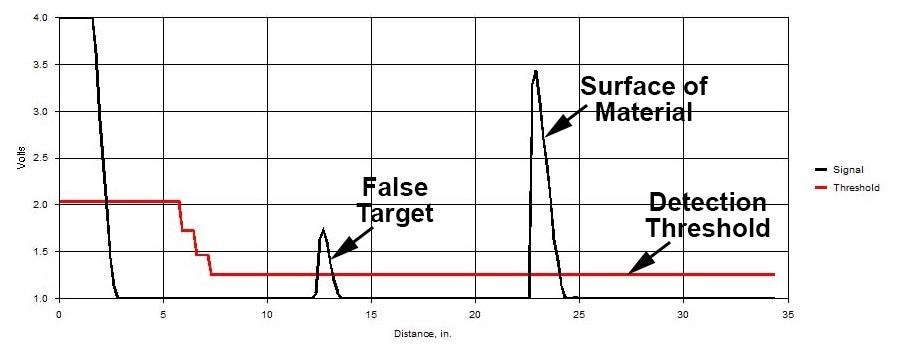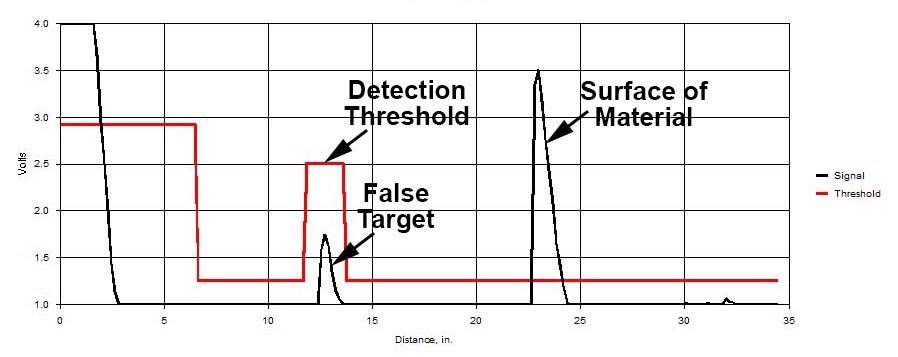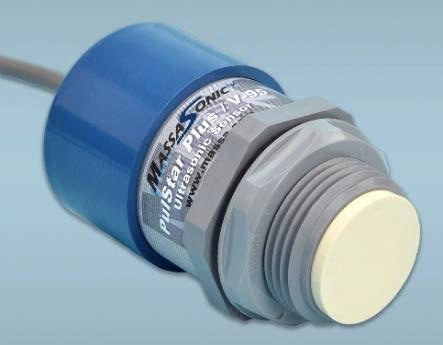Ultrasonic Sensors are frequently utilized to measure the level of solid and liquid materials. They are cost-effective, reliable instruments for use in these applications. The sensor is mounted over the surface of the solid or liquid while in operation.
It transmits a sound pulse that reflects from the surface and then measures the time for the echo to return to establish the distance to the material.1
Sometimes the characteristics of the surface of the material can decrease the reflectivity of the ultrasonic signal, or vapors from the material being measured can increase the ultrasonic signal’s attenuation.
The range of detection of the sensor will be decreased in these instances. Advanced ultrasonic sensors can be used to overcome these reductions in echo amplitudes. Structural components, like a small pipe, can also be located in the acoustic path between the solid or liquid surface and the ultrasonic sensor.
They are able to reflect some of the sound and generate a false echo which interferes with the ability of the sensor to detect the echo from the surface of the material properly. The section below outlines how these problems can be overcome using advanced ultrasonic sensors.
How an Advanced Sensor Can Ignore False Echoes and Increase Reduced Echo Levels
An example of an ultrasonic waveform is shown in Figure 1. Graphs of both the magnitude of the received ultrasonic signal and the magnitude of the detection threshold as a function of distance from the sensor are depicted.

Figure 1. Ultrasonic Waveform from a MassaSonic® PulStar® Plus Sensor Showing a False Target Being Detected Instead of the Echo from the Surface of a Liquid or Solid Material. Image Credit: Massa Products Corp.
The red curve is the magnitude of the detection threshold for the normal factory setting, and the black curve demonstrates the magnitude of the received ultrasonic signal. Two target echoes are contained in the plot of the ultrasonic signal.
A false echo is shown in the first target, such as one generated by a pipe located in the acoustic path between the sensor and the solid or liquid. The second target represents the echo from the surface of the material. The false target is higher than the normal factory set detection threshold, as shown.
The sensor would therefore provide an incorrect level reading by interpreting it as the surface of the material. The MassaSonic® PulStar® Plus Sensors enable the user to show an ultrasonic waveform on a computer screen and to alter the levels of the detection threshold at different distances from the sensor.
The threshold can be expanded around the false target so that it is not detected. The ultrasonic waveform is shown in Figure 2 after the detection threshold levels were altered. As demonstrated, the threshold in the region over the false target has been significantly increased to above the amplitude of the echo.

Figure 2. MassaSonic® PulStar® Plus Ultrasonic Waveform With the Same Targets As In Figure 1, But With the Detection Threshold Modified to Ignore the False Target. Image Credit: Massa Products Corp.
Now the sensor will detect only the echo from the surface of the material and ignore the echo from the false target to supply the correct level information. The PulStar® Plus also has a power level control feature.
The strengths of the reduced amplitude echoes which fall under the detection threshold can now be increased and detected. These features allow the PulStar® to operate in many applications, which are challenging for other ultrasonic sensors. Figure 3 shows a MassaSonic® PulStar® Plus Sensor.

Figure 3. MassaSonic® PulStar® Plus Sensor. Image Credit: Massa Products Corp.
References
- A more complete overview of the fundamentals of ultrasonic sensors is contained in the two-part article entitled “Choosing an Ultrasonic Sensor for Proximity or Distance Measurement,” written by the author of this article and published in the February and March 1999 editions of Sensors Magazine. Reprints of this article can be obtained at www.massa.com/about/publications
Acknowledgments
Produced from materials originally authored by By Donald P. Massa from Massa Products Corporation

This information has been sourced, reviewed and adapted from materials provided by Massa Products Corp.
For more information on this source, please visit Massa Products Corp.